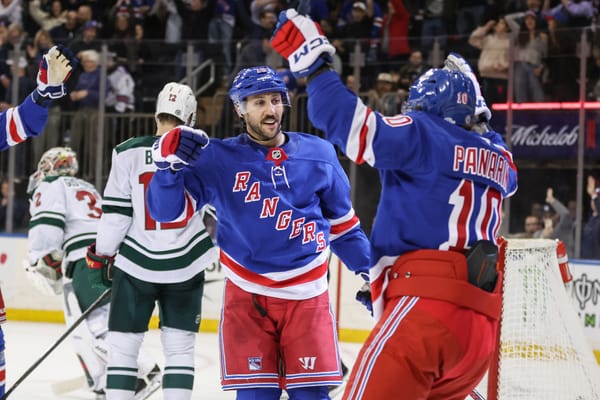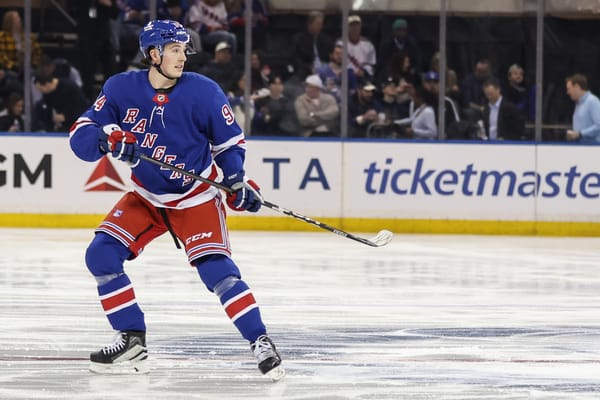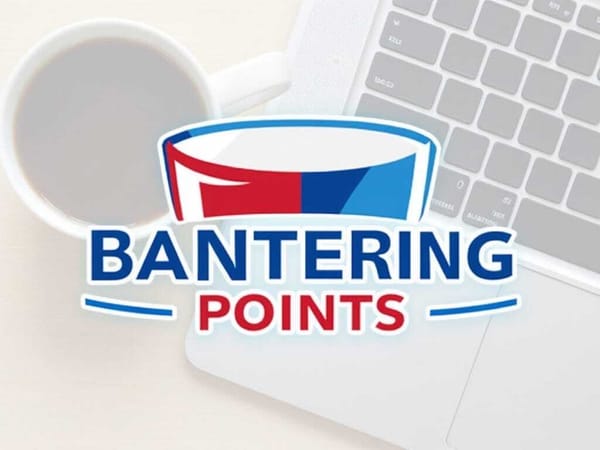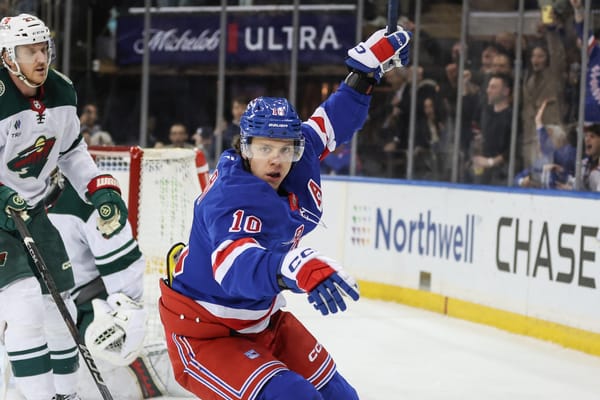Looking for Leadership in Free Agency
The Rangers are coming off of a very good week.
It was just more than a week ago when the Rangers sent defenseman Neal Pionk to the Winnipeg Jets for * checks notes * wait, that can’t be right...it says here Jacob Trouba? Huh, well damn. After Jeff Gorton pulled off a heist that Danny Ocean would be proud of, he went to Vancouver over the weekend and came back with Kaapo Kakko and bunch of shiny, new mystery boxes. Not bad, if I do say so myself.
With the Draft in the books, the Rangers and the rest of the hockey world turn their eyes towards free agency, which began Sunday with the week-long interview period that allows teams, agents and the players to get a sense of the market — and their value in it — before deals could be officially signed on July 1.
Everyone knows about the biggest prizes out there in Artemi Panarin, Sergei Bobrovsky, and Matt Duchene. In prior years, one could without a doubt consider the Rangers major players for one, if not all, of those big names.
This year, though, things are different. Panarin and Bobrovsky seem destined for the sunny oasis of Sunrise, Florida, while Matt Duchene seems to be a target for Nashville. Things seem rather quiet on the free agency front when it comes to the Blueshirts, and while it would be super fun for the Rangers to sign Panarin and add him to these young guns the Gorton and Co. have assembled, there isn’t that much of a dire need for him now. The Rangers aren’t in a “win-now” mode and seem content to sit out the big frenzy this year.
However, that doesn’t mean the Rangers should stand pat entirely; far from it, in fact. It’s been rumored since the offseason began that the Rangers are going to be busy these next few weeks thanks to the likes of Jimmy Vesey, Vladislav Namestnikov, and probably the biggest trade chip of them all, Chris Kreider all being linked in various deals.
The Rangers are going to fill those voids with their cadre of young forwards entering the lineup, specifically the aforementioned Kakko and last year’s ninth overall draft pick Russian winger Vitali Kravtsov, their additions, along with the expected — hopeful? — progression of young players like Filip Chytil, Lias Andersson, and Brendan Lemieux leaves the front office with options to make moves to fill holes elsewhere in the lineup.
For those spot, the team will most likely turn to the free agency pool, and when they do there are a variety of names the team could target. When they do, there should be a certain type of player they take look a look: older, skilled forwards.
Currently, the oldest forwards under contract are Jesper Fast and Kreider, who are both 27 years old. The oldest player on the team is goaltender Henrik Lundqvist at 36, and no matter how you slice it, the team is going to get younger this upcoming season. While having all of that young, unbridled talent can be a lot of fun, putting teenagers and players in their early 20s into high pressure situations can be a bit hazardous, both in the short and long-term. So when looking at the free agent market, the Rangers should take a page from the Carolina Hurricanes.
The Canes were stacked up with young, impact forwards playing premium minutes. The team traded away Jeff Skinner and shifted the focus of the attack to guys like Sebastian Aho, Teuvo Teravainen, and Andrei Svechnikov. Carolina also modified it’s defense by adding Dougie Hamilton and Trevor Van Riemsdyk to a group that included Brett Pesce and Jacob Slavin. Another move the Hurricanes did that ended up paying huge dividends was bringing in veteran forward Justin Williams. It was Williams who became the team’s dad in a way, guiding the young team through the trials and tribulations of a long season all while letting the team have it’s fun (the Storm Surge is the best thing to happen to hockey).
Another example is the recently traded Patrick Marleau — coincidently to the Hurricanes— from Toronto. The Leafs brought added the future Hall of Famer two summers ago to not only bolster their scoring depth but to help their young guns of Auston Matthews, Mitch Marner, and William Nylander acclimate to life in the NHL.
While things like “veteran leadership” is often overlooked, especially when a contending team cites it as an excuse for bringing in a legitimately bad player, a rebuilding team like the Rangers could benefit a player or two coming in and serving as a role model in the dressing room and a contributor on the ice. This offseason there are a few quality forwards that can not only fill that “veteran leadership” void but can also help solidify the bottom six of the roster.
One target for the Rangers could be Jason Spezza. While Spezza may not be the center he was in his years in Ottawa, he’s transitioned into a third line center these last couple of years in Dallas and is now looking for a new team to sign with. The man with the funky ears and kind of creepy laugh has slowed down a bit with age, but even at 36, he should be a relatively cheap addition to the team, with Evolving Hockey’s contract projection having at a one-year, $1.620 million deal. His size and right handed shot also fill a couple of needs within the depths of the Rangers’ forward corps.
Another big, right handed forward the Rangers could target is the recently bought out Corey Perry. While he might not have the best reputation within #HockeyTwitter, Perry is still a rather productive forward, although injuries limited him to just 31 games his final year in Anaheim. Perry is a player whose reputation alone might award him a rather gaudy contract, but the circumstances that ended his time as Duck could allow a team like the Rangers to scoop him up on the cheap.
A third option is San Jose captain Joe Pavelski. The Sharks are in a tough position in regards to the salary cap after signing Erik Karlsson to a massive eight-year, $92 million deal earlier this month. Captain America might be looking for a new home and we know how good he looks in red, white and blue. Of the three options listed, Pavelski is easily the most expensive, with a projected three-years, $7.4 million per year according to Evolving Hockey. Pavelski could slot right into the second-line center role behind Mika Zibanejad, while Chytil either anchors the third line.
All three of these players have experience, leadership qualities with captain or alternate captain credentials, and — most importantly — skill to help guide the next generation of Blueshirts.




